Content
Usually, when we talk about developing a mobile app, in this context, we always think first of all about the usability that the designers will provide, about the frontend that will bring what we have in mind to life. And also about the platforms where we want to place the app, so what developers should we hire – limit ourselves to Android or focus on iOS? But rarely does anyone consider ensuring this works together at the idea stage. Thus, mobile app backend development is the foundation of a building, and as we know, no house has ever stood without a keystone. The backend can also be compared to the work of a storekeeper, who pulls out the necessary items from the depths of his “warehouse” at the request of users.
What is a Backend for a Mobile App?
This is the base of everything that the architecture of the project should be built on. The backend of a mobile application is part of the app, the infrastructure that runs on the server side, and ensures their interconnection.
It’s where the processes related to:
- Analyze (processing incoming data)
- Authorization and authentication (user registration, logging in, password management)
- Storage (user profiles, application settings, content)
- Synchronization (permanent access by users to their data)
- Updating (updates regardless of the device they use, push notification delivery)
- Interaction with other services (connecting to the third party)
- Security (encryption methods and secure communication protocols ensure data privacy)
The backend infrastructure must handle an increasing user load and ensure the application is fast, even during peak periods. This includes optimizing server performance, implementing caching mechanisms, and scaling the infrastructure as the user base grows.
How Does a Mobile Backend Work?
As mentioned above, the mobile backend is the foundation for the app. But what is the foundation of the mobile backend itself? It is a data storage system where all the necessary information is collected, which can be in the form of NoSQL databases or cloud solutions. The cable that connects the backend to the frontend is the API. The user requests go through it, and the response comes through it.
A well-designed architecture and backend infrastructure ensure the application can handle growing user demands without sacrificing performance. It is worth noting that various technology combinations are used to support all processes.
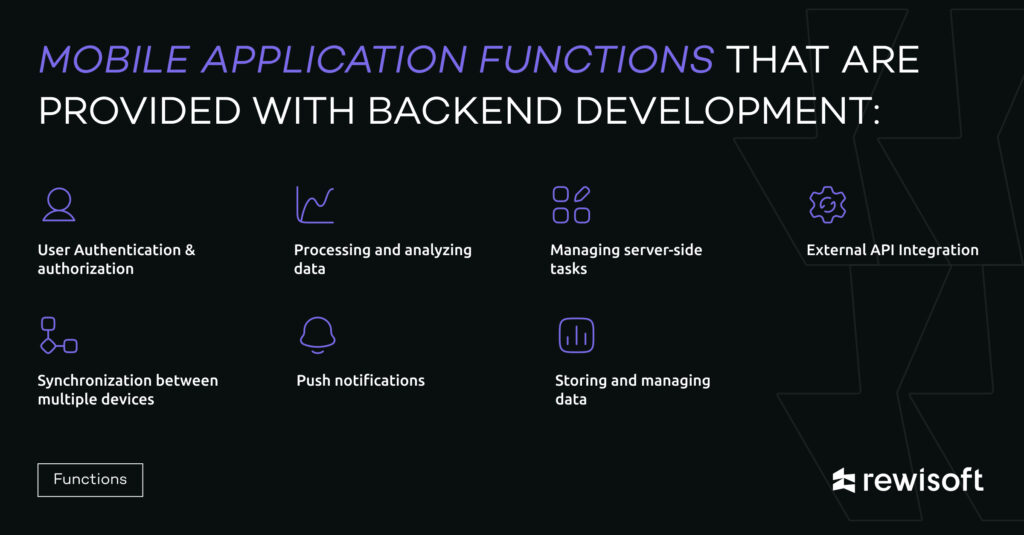

Types of Mobile App Backend Development
Depending on the needs of your particular app, development can be configured differently. Moreover, according to the evolution of your project, it is possible that the mobile backend can change. Let’s take a look at the different types of mobile app backend development:
- Software as a Service (SaaS) / 3rd party services
- Mobile Backend as a Service (MBaaS)
- Custom backend solution
- Cloud server
SaaS
If material resources and time constraints constrain you, this solution is best for you because of its comprehensiveness. The backend components, infrastructure, and managed services are pre-engineered in this case. All you have to do is to pay for their use. Examples include:
- WordPress
- Mailchimp
- Dropbox
MBaaS
Perfect for projects requiring fast development, scalability, and easy integration with third-party services. With MBaaS, developers can use out-of-the-box components such as user management, data storage, push notifications, and integration with social networks. Such services include:
- Firebase
- Apple Cloudkit
- Back4app
Custom Backends
If your project is not that simple and demands non-trivial approaches, this type of mobile backend development is for you. This approach provides maximum flexibility and customization options, allowing developers to design and implement backend components according to specific needs. Examples are:
- Django
- Laravel
- Ruby on Rails
Cloud Servers
This approach provides flexibility in resource allocation, automatic scaling, and storage capabilities. Cloud-based backend development is suitable for fast-growing projects for which stable and secure account retention is critical. With cloud servers, developers can use a variety of providers:
- Amazon Web Services
- Microsoft Azure
- Google Cloud Platform
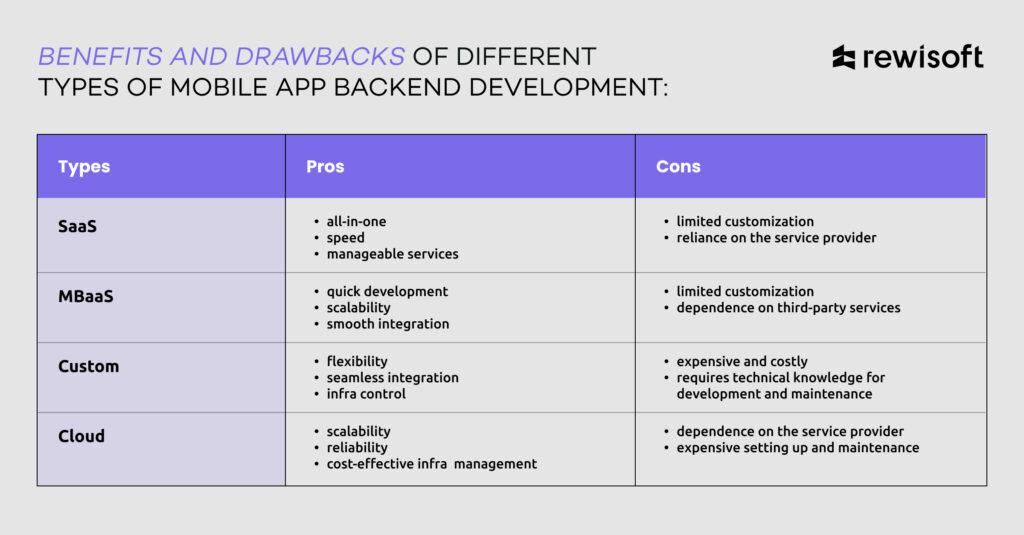

Apps that Need a Backend
But does your application even need a backend? Let’s find out. So, if your app is on the list below, consider looking for a developer.
eCommerce Apps
These apps need backend development to manage product catalogs, user accounts, shopping carts, and, of course, payment processing. The backend provides order management, transaction tracking, and integration with third-party payment systems. Although some applications may operate solely on the client side, these categories benefit greatly from backend integration.
Examples: Amazon, eBay, Aliexpress
On-Demand Service Apps
These are the “mediums” that connect users to service providers. We use them every day when we need to choose – which driver to go with, which restaurant to order lunch from, and which apartment to rent for an upcoming trip to a nearby country. Recommendation for booking, history of orders, transactions security – all this needs to work adequately. The backend provides user authentication, communication, real-time geolocation, and payment processing.
Examples: Uber, Airbnb, Homejoy
Messaging Apps
The backend manages user contacts, chat history, and photo/video/audio sharing. The technology works appropriately to ensure a smooth exchange of text and multimedia content, both in private conversations and in public groups.
Examples: WhatsApp, Slack, Telegram
Live Streaming Apps
The complex structure and logic of such apps require the backend to manage media directories, user preferences, playlists, and content recommendations. The backend provides content delivery, digital rights management, and analytics.
Examples: Netflix, Spotify, YouTube
Social Networking Apps
Similar to the previous point, the main focus is not on video but on user communication. The backend manages user profiles, friend lists, comments, and interactions. It also handles notifications, messages, and content moderation, building our feeds based on our preferences. Every single one of your likes counts toward the backend.
Examples: Facebook, Instagram, Twitter
Health Apps
Health data is incredibly sensitive information, which is why it is so important to ensure its confidentiality, correct display, recommendations, and seamless communication between doctor and patient. The backend can integrate with wearable devices or fitness trackers to synchronize data.
Examples: Google Fit, MyTherapy, Headspace
Productivity Apps
Business or training platforms often use team collaboration applications to synchronize data across multiple devices, manage user accounts, and facilitate collaboration among team members. The backend provides file storage, access control, and real-time updates. All of this, in turn, provides a streamlined workflow.
Examples: Google Drive, Trello, Jira
Of course, this is not an exhaustive list. Thus, mobile apps that include user accounts, data storage, real-time updates, complex business logic, or interaction with external services (such as payment systems) will benefit from a backend to support functionality and smooth operation.
You can read more about them in the Case Studies section
Apps that Do Not Need a Backend
Now let’s look at applications that can do just fine without a backend. You don’t have to worry about choosing the right technology if yours is on this list.
- Offline Utility Apps (calculators, QR code scanners, flashlights, notes)
- Standalone Gaming Apps (simple games which require the participation of one player without interaction with the others – puzzles, arcades, crosswords)
- Static Information Apps (encyclopedias, dictionaries, guidebooks, reference books)
- Personalization Apps (wallpapers, ringtones)
It is worth remembering that if your application does not require a backend now, it is not a fact that it will not be needed in the future. Meet me here when that time comes!
Benefits and Drawbacks Of Mobile App Backend Development
Now let’s have a look at the strengths and pitfalls of the mobile backend.
Pros
- Improved App Performance (when heavy computational processes are moved from the client side to the server side, it enhances the performance of the application itself)
- Scalability (important for applications experiencing rapid growth or expecting high user involvement)
- Security (back-end systems can use encryption methods, implement secure communication protocols and provide substantial control)
- Seamless Integration of 3rd-Party Services (backend development allows seamless integration of 3rd-party services and APIs)
Cons
- Complexity (increases project complexity and build time, requires additional people in the development team)
- Ongoing Maintenance (not only development but also permanent support of the technology after launching – monitoring server resources, database management, applying security patches, and solving potential scalability issues)
- Infrastructure Costs (server hosting, database management, data storage, and monitoring)
Despite the obvious rising costs associated with mobile app backend development implementation and all the associated complexities, you should still take advantage of it. Because in the future, it will bring simplification and smooth running of the application. The main thing is to properly plan and implement such development.
Backend for Android App vs. Backend for iOS App
The similarity of the set of basic features between the two operating systems is obvious, so let’s see what the difference in approach is due to the unique characteristics and requirements for a particular platform:
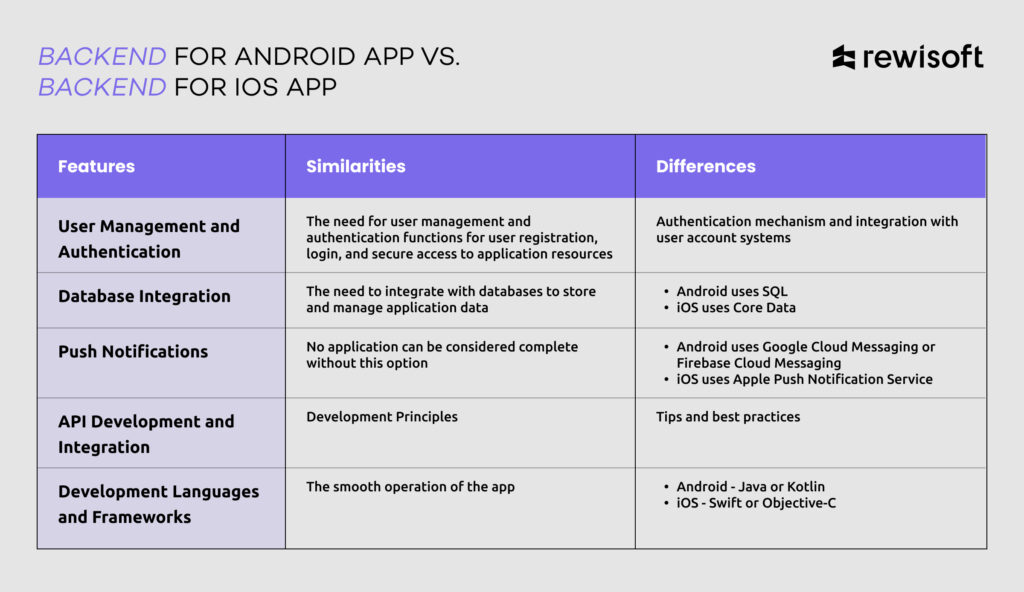

Tools for Android App Backend Development
- Firebase
- AWS Amplify
- Django
- Ruby on Rails
- Node.js with Express.js
Tools for iOS App Backend Development
- Firebase
- AWS Amplify
- Vapor
- Ruby on Rails
- Node.js with Express.js
Tech Stacks For Backend App Development
The variability of technologies that can be used for your application means that you will choose the combination of programming languages, frameworks, databases, and web servers that is right for you. The choice of the stack depends on project requirements, scalability needs, developer experience, and ecosystem support.
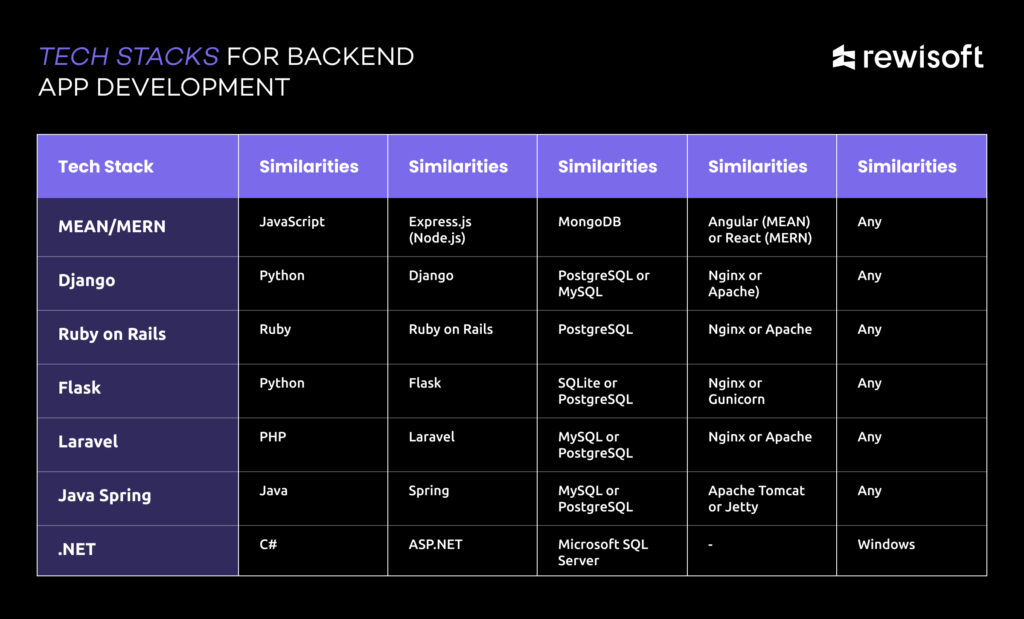

How much does it Cost to Make a Mobile App Backend?
As with any development, the price of mobile app backend development varies depending on various factors. The estimate can start from $30,000.
Project Complexity
An app is not created equal to another app. If you want to create a trivial calorie calculator – that’s one level, but if it’s a whole world of fitness in your pocket, the work will be done differently. The backend complexity of a mobile app, including the number of features, integration with external services, security requirements, and scalability. As development time grows, so does the price.
Integration
The more third-party services you want to add to your project, the higher the cost.
Scalability and Performance
If you are planning a significant application increase, you should consider implementing scaling well in advance.
Security Measures
Implementing strong security measures like data encryption, secure authentication mechanisms, and adherence to industry standards may require additional development effort and increased cost.
Development Approach
Let’s go back to the development types we discussed above – SaaS and MBaaS, Custom, and Cloud. Standard customizations and third-party professionals will cost less than a custom set of features and keep staff dedicated to development and support. Ongoing maintenance, bug fixes, and updates to meet changing requirements or technological advances should be factored into the total cost.
Team Rates
The most important role here is played by the experience of the backend developers and their region of residence. Rates can be hourly or project-based. Here’s a breakdown of the cost range by region:
North America: $100 – $250 per hour
Western Europe: $80 – $200 per hour
Eastern Europe: $40 – $100 per hour
Asia: $25 – $80 per hour
Thus, Eastern European backend developers will be ideal in terms of value for money.
Technology Stack
Some technologies or frameworks may require specialized knowledge, leading to higher development costs. Remember, here, you should not choose the cheapest stack but the one with the correct set of solutions for your project. Here are a few examples:
Firebase Stack (BaaS)
A comprehensive backend-as-a-service (BaaS) solution that can significantly reduce development time and cost. The cost depends on the complexity of the application functionality and integration requirements.
MEAN/MERN Stack
The cost depends on the complexity of the application and the need for real-time data synchronization, API integration, and advanced features.
Django Stack
Django stack development costs are influenced by factors such as the complexity of the backend functionality, integration requirements, and scalability considerations.
Ruby on Rails Stack
The cost can vary depending on the complexity of the application, the need for integration, and the level of customization required.
Flask Stack
The functionality of the backend, the integration requirements, and the complexity of the application features influence the cost.
By the way, our company provides end-to-end mobile app development services, which includes app’s mobile backend processes. You can read more about the rough estimation of services in this table.
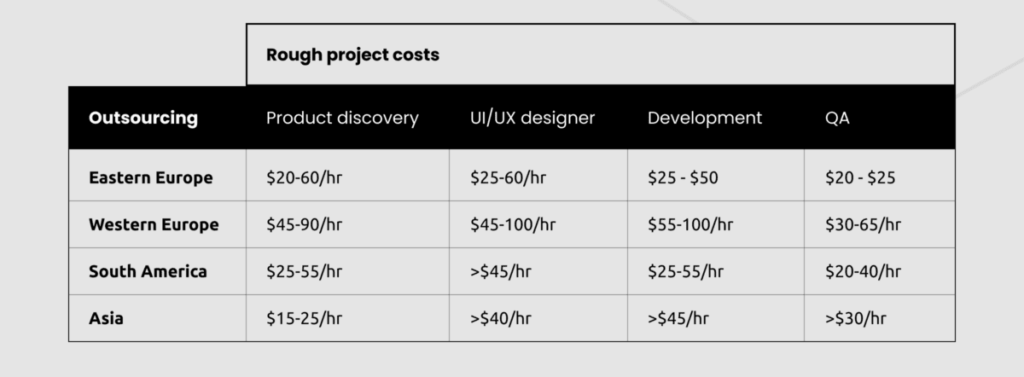

Mobile Backend Development: The RewiSoft Experience
We would like to share our client’s success story. It is Eveliate, an AI-powered wellness and fitness application. Our company delivered end-to-end services to the client, which included backend development using Firebase. Thus, the complete development scheme looked as follows:
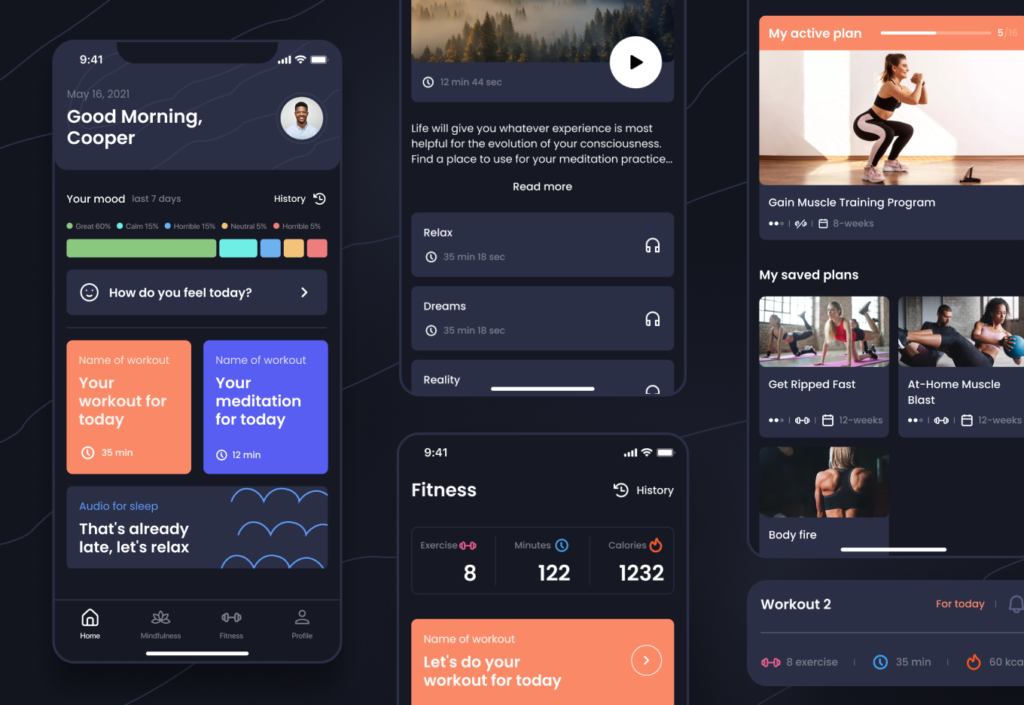

You can read more about the case study here.
Also, we had Divvy: the end-to-end project that simplifies and optimizes your investments with our affordable, user-friendly portfolio management tool. Part of the team in building this product was our backend developer.
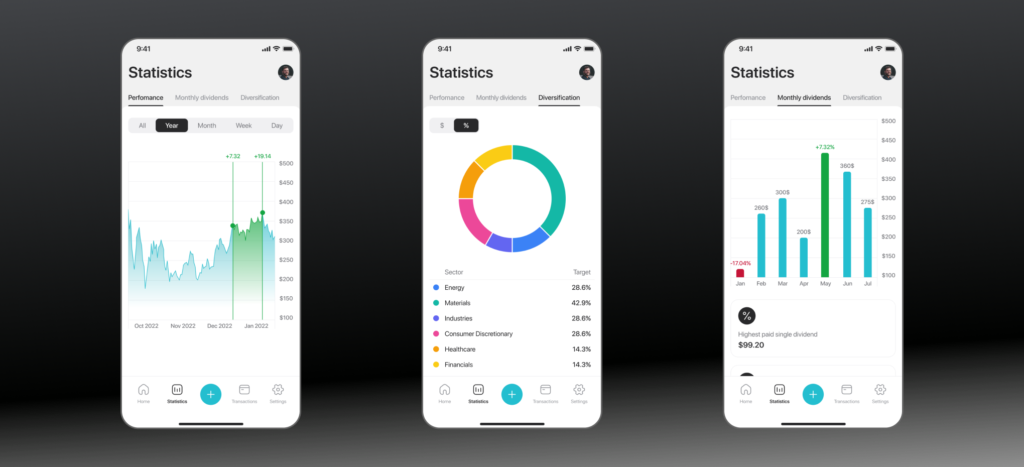

Conclusion
Mobile app backend development is an essential part of any app if it’s not a compass or a flashlight. It is an invisible helper that ensures seamless “communication” between the application and the server, as well as with third-party services. Without a mobile app backend, you can forget about the customization and scalability of your project, no matter how successful it is. That’s why it’s better to think about this part of development beforehand. It’s better to make the foundation of your house more solid right away than the original project seemed to require. After all, add a fireplace to the room in the future…
There are several types of mobile backends; some types are sure to work for you. We at Norzel are no strangers to this technology and can advise you on picking the perfect tech stack and team composition.
You will be pleasantly surprised with the prices, attitude, and level of expertise!







